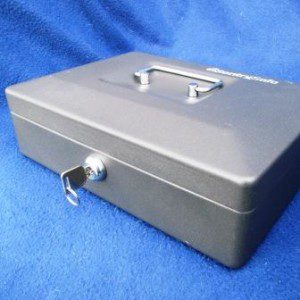
Sometimes people put money in a trust, thinking it’s like a lockbox. Out of reach of liabilities including creditors in a bankruptcy filing.
Is that true?
Trust as a Lockbox?
The ‘lockbox’ idea is somewhat common. But there are many different types of trusts. The individual terms of each define it.
A gentleman named Behan filed a Chapter 7 bankruptcy, disclosing that he and four siblings were beneficiaries of a trust set up by their father. Property in the trust included 4 apartments. He claimed it was all exempt in an amended filing.
Spendthrift Trusts and Bankruptcy
The trust had a spendthrift provision. Properly set up, a spendthrift provision protects a beneficiary’s interests from attachment by creditors or assignment by the beneficiary. A spendthrift provision uses language protecting trust assets against debts.
Spendthrift provisions are perfectly valid when done correctly and in the right context. There was no indication there was anything defective about the spendthrift provision in this case, which even included specific language protecting against insolvency or bankruptcy law.
Trusts and Bankruptcy: A Closer Look.
Challenged by the bankruptcy trustee, the court pointed out that spendthrift clauses are fine. But, to qualify as a spendthrift trust, the beneficiary must show that he or she can’t access his or her interest and does not possess exclusive control over distribution or termination of the trust.
In this case the trust had another provision directing that the trustees ‘shall’ pay to any beneficiary so much of the principal and income as the beneficiary demands in writing. This provision is called a power of appointment. The only condition here was that the beneficiary not be incapacitated at the time of the demand.
The issue for the court was whether that power of appointment exposed property in the trust to the bankruptcy estate, invalidating the spendthrift provision.
The bankruptcy trustee, whose job is to gather unexempt assets for the benefit of creditors, argued that it was wrong to allow a beneficiary to shield assets from creditors when he has control over those same assets. In other words, where a debtor is entitled to have assets in the trust conveyed to him on demand, the spendthrift provision is mere words, not legally valid, and the bankruptcy estate is entitled to reach that portion of trust property that the debtor has right to demand.
Is a Spendthrift Provision a Lockbox?
The court held in Casey v. Schneider, Trustee, decided on February 26, 2014 in U.S. Bankruptcy Court for the District of Massachusetts, that the power of appointment, although not exercised, defeats the spendthrift provision intended to protect the trust. The court authorized the bankruptcy trustee to exercise the power of appointment for the benefit of the bankruptcy estate, meaning the assets intended to be protected by the trust are now available to creditors.
Trusts are valid legal instruments in many contexts. But viewing a trust as an impenetrable lockbox can be a mistake. In this case the lockbox was broken open, the assets made available to pay debts. All provisions of a trust need to be carefully examined to ensure that the actual intent of the trust will be carried out.
More bankruptcy blog topics here.
Views: 6




